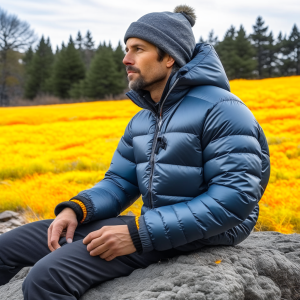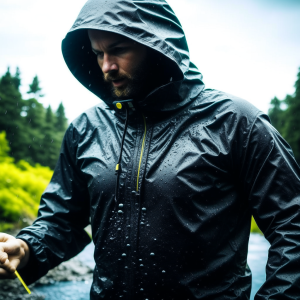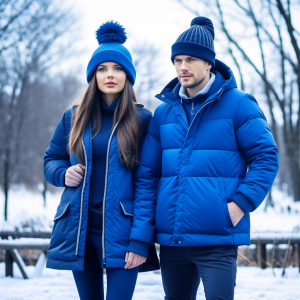Maximize Your Winter Warmth and Style with Effective Layering Techniques
As winter sets in with its bone-chilling cold, finding a balance between warmth and fashion becomes essential. The dropping temperatures compel us to explore effective layering methods, but have you ever considered the underlying principles that make some clothing layers more effective than others? In this comprehensive guide, we will delve into the science of layering for cold-weather clothing, uncovering the vital strategies that distinguish superior garments in the fight against the cold, ensuring that you remain both comfortable and fashionable throughout the winter months.
Layering your clothing is not just a fashion choice; it represents a strategic approach to heat retention and comfort during harsh winter conditions. When temperatures drop significantly, our bodies instinctively attempt to conserve heat by narrowing blood vessels, often resulting in chilly extremities. However, this natural response frequently falls short in extreme cold. This is where the art and science of layering become crucial, enabling us to create an effective barrier against frigid air while allowing for movement and comfort.

Establishing Your Base Layer: The Essential Element for Winter Warmth
The base layer is the cornerstone of your winter wardrobe, designed to fit snugly against your skin while providing crucial insulation. To fully appreciate its significance, it's essential to understand the principles of moisture management and how it directly influences your warmth and comfort during the chilly months ahead. This foundational layer is not just about comfort; it also plays a pivotal role in regulating your body's temperature and moisture levels.
Utilizing Moisture-Wicking Fabrics for Optimal Comfort
Choosing the right fabric for your base layer is vital for effective moisture management. The importance of moisture-wicking properties cannot be overstated, as these specially formulated textiles are engineered to draw moisture away from your skin—whether from perspiration or external dampness—preventing it from accumulating and causing discomfort. A top-quality base layer not only serves as an effective moisture barrier but also keeps you dry and cozy, even under the most challenging weather conditions, significantly enhancing your overall warmth and comfort.
Understanding Insulation: Benefits of Merino Wool and Synthetic Fibers
Let’s take a closer look at how materials like merino wool and synthetic fibers can enhance the insulating properties of your base layer. Merino wool is renowned for its natural ability to retain warmth while allowing breathability, making it an outstanding choice. It provides excellent insulation while efficiently wicking moisture away from your skin. On the other hand, synthetic materials such as polyester and nylon offer a robust balance between durability and insulation, creating a warm microclimate against your body that effectively traps heat, ensuring you stay comfortable even in the harshest conditions.
Finding the Ideal Fit: Essential Tips for Base Layer Performance
Selecting the right fit for your base layer goes beyond merely picking your usual size; it’s about optimizing its performance. A snug-fitting base layer maintains close contact with your skin, which enhances both its insulating and moisture-wicking capabilities. However, balance is vital—too tight can restrict movement and comfort, while too loose may hinder performance. When deciding on fit, consider the type of activities you’ll be engaging in and your overall layering strategy to ensure seamless integration with your other winter garments.
In summary, the base layer serves a critical role that goes beyond being just another piece of clothing; it functions as an advanced moisture-wicking and insulating shield against the biting winter air. By understanding the unique properties of materials like merino wool and synthetic fibers, along with mastering the fit, you can transform your base layer into an essential component of your defense against cold temperatures.
Utilizing the Insulating Layer: Your Key to Retaining Body Heat
 As we transition to discussing the insulating layer, we will focus on its vital role in capturing and retaining heat around your body. This layer is essential for effective heat retention, acting as a protective cocoon against the harsh elements of winter. Let’s explore critical aspects such as warmth-to-weight ratios, the advantages of down insulation, and the eco-friendly appeal of synthetic alternatives that contribute to your winter comfort.
As we transition to discussing the insulating layer, we will focus on its vital role in capturing and retaining heat around your body. This layer is essential for effective heat retention, acting as a protective cocoon against the harsh elements of winter. Let’s explore critical aspects such as warmth-to-weight ratios, the advantages of down insulation, and the eco-friendly appeal of synthetic alternatives that contribute to your winter comfort.
Comprehending Warmth-to-Weight Ratios for Efficient Insulation
Understanding warmth-to-weight ratios is crucial when selecting an insulating layer. This principle highlights the need for insulation materials that deliver impressive warmth without adding unnecessary bulk. Essentially, it’s about achieving maximum warmth while minimizing weight, ensuring you can move comfortably and freely. This balance is especially important for individuals who require insulation without feeling weighed down, enabling unrestricted activity in cold environments.
Down Insulation: Lightweight Warmth for Outdoor Enthusiasts
Down insulation is a premier choice for those seeking unparalleled warmth in a lightweight form. Sourced from the soft feathers of ducks and geese, down is famous for its exceptional warmth-to-weight ratio. Its light and compressible nature make it a favored option for winter adventurers who need effective insulation without sacrificing mobility. Recognizing the benefits of down insulation is essential in understanding its role in creating an insulating layer that seamlessly combines warmth, comfort, and flexibility.
Opting for Synthetic Insulation: Ethical Warmth in All Conditions
Synthetic insulation materials, primarily composed of polyester fibers, have become popular ethical alternatives in the insulation market. What sets synthetic insulation apart is its ability to retain heat even in damp conditions, a scenario where down may falter. This resilience in unpredictable weather makes synthetic materials ideal for various climates. Furthermore, choosing synthetic options aligns with ethical considerations, allowing you to enjoy warmth without compromising your values.
Assessing Thickness: Precision in Insulation Selection
Determining the appropriate thickness for your insulating layer requires careful evaluation; precision is key. Consider the expected level of cold exposure alongside your layering strategy when deciding on thickness. In milder climates, a thinner insulating layer may suffice, whereas harsher conditions may call for a thicker, more robust option. By grasping the nuances of insulation thickness, you can customize your insulating layer to meet the specific demands of your winter activities.
Ultimately, the insulating layer transcends the traditional role of clothing, evolving into a strategic ally in the battle against cold temperatures. By understanding warmth-to-weight ratios, recognizing the benefits of down insulation in conjunction with synthetic alternatives, and providing guidance on thickness selection, we can elevate the insulating layer into a calculated defense mechanism against winter’s icy grip.
The Outermost Layer: Your Ultimate Defense Against Severe Winter Conditions
The outermost layer acts as your crucial barrier against biting winds and frigid temperatures. This layer serves dual functions: it protects against environmental elements while also playing a significant role in moisture control. As we explore the outer layer, we will uncover the importance of breathability, the transformative advantages of DWR finishes and Gore-Tex membranes, and the essential windproof features that enhance the efficiency of your insulation.
Breathability: A Cornerstone of Comfort and Moisture Management
Frequently underestimated, breathability is a critical feature of the outer layer that greatly influences overall comfort. This characteristic pertains to the fabric’s ability to allow sweat vapor to escape from your body while preventing external moisture from entering. Achieving this delicate balance is essential for keeping you dry and comfortable, thereby alleviating the chilling effects of trapped moisture. A breathable outer layer is vital for maintaining a cozy microclimate within your clothing, ensuring optimal comfort during inclement weather.
DWR Finishes and Gore-Tex: The Apex of Waterproofing Technology
 DWR (Durable Water Repellent) coatings and Gore-Tex membranes are at the forefront of cold-weather outerwear technology. DWR finishes provide fabrics with water-repellent capabilities, creating an effective barrier against rain, sleet, and snow. Gore-Tex and similar technologies elevate waterproofing to unparalleled levels by offering an exceptional combination of impermeability and breathability. Understanding how these technologies work together is essential for staying dry and comfortable, even in the harshest weather conditions.
DWR (Durable Water Repellent) coatings and Gore-Tex membranes are at the forefront of cold-weather outerwear technology. DWR finishes provide fabrics with water-repellent capabilities, creating an effective barrier against rain, sleet, and snow. Gore-Tex and similar technologies elevate waterproofing to unparalleled levels by offering an exceptional combination of impermeability and breathability. Understanding how these technologies work together is essential for staying dry and comfortable, even in the harshest weather conditions.
Windproof Features: Enhancing Protection Against Frigid Winds
Windproof characteristics are indispensable in severe cold, especially when biting gusts can penetrate even the most robust fabrics. The windproof outer layer acts as an impenetrable barrier against cold air, enhancing comfort while safeguarding the insulation of the inner layers. By effectively blocking icy winds, your outer layer becomes a formidable protector, ensuring that your carefully selected layers work harmoniously to keep you warm and shielded from harsh elements.
In essence, the outermost layer is more than just a protective shell; it is an advanced barrier that masterfully balances breathability and waterproofing. By understanding the significance of breathability, exploring the innovations of DWR finishes and Gore-Tex membranes, and appreciating the critical role of windproof features, we can elevate the outer layer into a dynamic garment that excels in style, functionality, and weather resistance.
Practical Tips for Achieving Ultimate Warmth and Style This Winter
With a solid grasp of effective layering principles, let's explore actionable tips and strategies that will enhance your cold-weather experience, seamlessly merging warmth with lasting style. Accessories play a crucial role in winter attire, often serving as unsung heroes that elevate your wardrobe. From the vital warmth provided by well-chosen gloves to the stylish addition of a cozy hat and the comfort of thermal socks, these seemingly minor details are instrumental in creating a fashionable and comfortable winter ensemble.
The Essential Role of Accessories: More Than Just Aesthetic Enhancements
Accessories are far more than mere decorative elements; they are critical components of your defense against the cold. Beyond their visual appeal, items such as gloves, hats, and thermal socks serve essential functions in enhancing your overall warmth. By thoughtfully incorporating these accessories, you can ensure that every part of your body is shielded from the chill, effectively preventing valuable body heat from escaping into the frigid air, thus maximizing your comfort and warmth during the winter months.
Investing in Quality Accessories: Recommendations for Optimal Comfort
The quest for warmth extends beyond your base and insulating layers; it also includes the careful selection of accessories. Invest in high-quality gloves crafted from insulating materials such as fleece or lined leather to establish a robust barrier against the cold. A warm hat with extra insulation or a cozy faux-fur lining not only looks chic but also aids significantly in retaining heat. Choose thermal socks made from merino wool or innovative synthetic blends to ensure maximum warmth and effective moisture management, keeping your feet cozy throughout winter outings.
Fashion-Forward Tips: Merging Functionality with Style
Staying warm during freezing temperatures doesn't have to compromise your sense of style. Utilize clever styling techniques to navigate the winter landscape with poise. Experiment with layering various textures in your outfit to create visual interest while simultaneously enhancing insulation. Select winter-appropriate colors that harmonize with the snowy environment, and don’t hesitate to accessorize with bold pieces like a vibrant scarf or chic earmuffs to elevate your overall look, making a statement even in the coldest conditions.
In summary, accessories are the understated architects of a well-rounded winter outfit. They not only enhance warmth but also allow you to express your style even in the coldest conditions. By choosing high-quality accessories and infusing your winter wardrobe with thoughtful styling, you can master the chill while showcasing undeniable elegance and sophistication.
Embrace the Harmonious Blend of Style and Functionality in Your Winter Wardrobe
As we conclude our examination of conquering the cold, it's crucial to acknowledge the role of style in winter clothing. Dressing for the cold does not mean sacrificing your fashion sense; instead, today's fashion landscape celebrates the integration of functionality and flair. Numerous outdoor and fashion brands have recognized and embraced the demand for winter gear that not only keeps you warm but also radiates confidence and contemporary elegance.
The Evolution of Cold-Weather Clothing: A Stylish New Frontier
 The cold-weather clothing industry is undergoing a renaissance, where winter gear transcends mere functionality to become a beacon of innovation and style. Designers and brands increasingly recognize the need for clothing that effortlessly combines practicality with aesthetic appeal. This transformation has ushered in a new era of outerwear that not only provides warmth but also captivates with its visual allure, allowing wearers to express their unique style.
The cold-weather clothing industry is undergoing a renaissance, where winter gear transcends mere functionality to become a beacon of innovation and style. Designers and brands increasingly recognize the need for clothing that effortlessly combines practicality with aesthetic appeal. This transformation has ushered in a new era of outerwear that not only provides warmth but also captivates with its visual allure, allowing wearers to express their unique style.
Leading Brands: Blending Fashion and Functionality
Several brands are leading this style revolution, expertly merging fashion and functionality in their winter apparel. Canada Goose is famous for its luxurious down coats that deliver remarkable warmth without sacrificing style. The North Face leverages cutting-edge technology in its designs, creating outerwear that balances chic aesthetics with practical functionality. Meanwhile, Moncler has redefined the puffer jacket, transforming it into a high-fashion statement piece, demonstrating that winter clothing can be both practical and runway-ready.
Effective Styling: Elevate Your Winter Fashion Experience
Now, let’s delve into how to effectively merge warmth and style in your winter outfits. Select standout pieces that fulfill both functional and aesthetic roles, such as a beautifully tailored wool coat or a sleek parka that serves as the centerpiece of your ensemble. Experiment with layering a chunky knit sweater over a fitted jacket for a cozy yet stylish look. Don't shy away from introducing vibrant colors into your winter wardrobe by accessorizing with eye-catching scarves or trendy boots that add a pop of personality.
Ultimately, embracing style in the cold is no longer a contradiction; it’s an exciting reality shaped by a dynamic fashion industry. As fashionable cold-weather gear emerges, adorned by innovative brands, the narrative shifts from mere survival to personal expression and individuality. So, immerse yourself in this style renaissance, choose pieces that empower you, and redefine fashion amidst the wintry embrace of the season.
The post Cold Weather Clothing Layers: The Science Explained appeared first on Survival Bite.
The Article Cold Weather Clothing Layers Explained: Understanding the Science Was Found On https://limitsofstrategy.com



Comments are closed